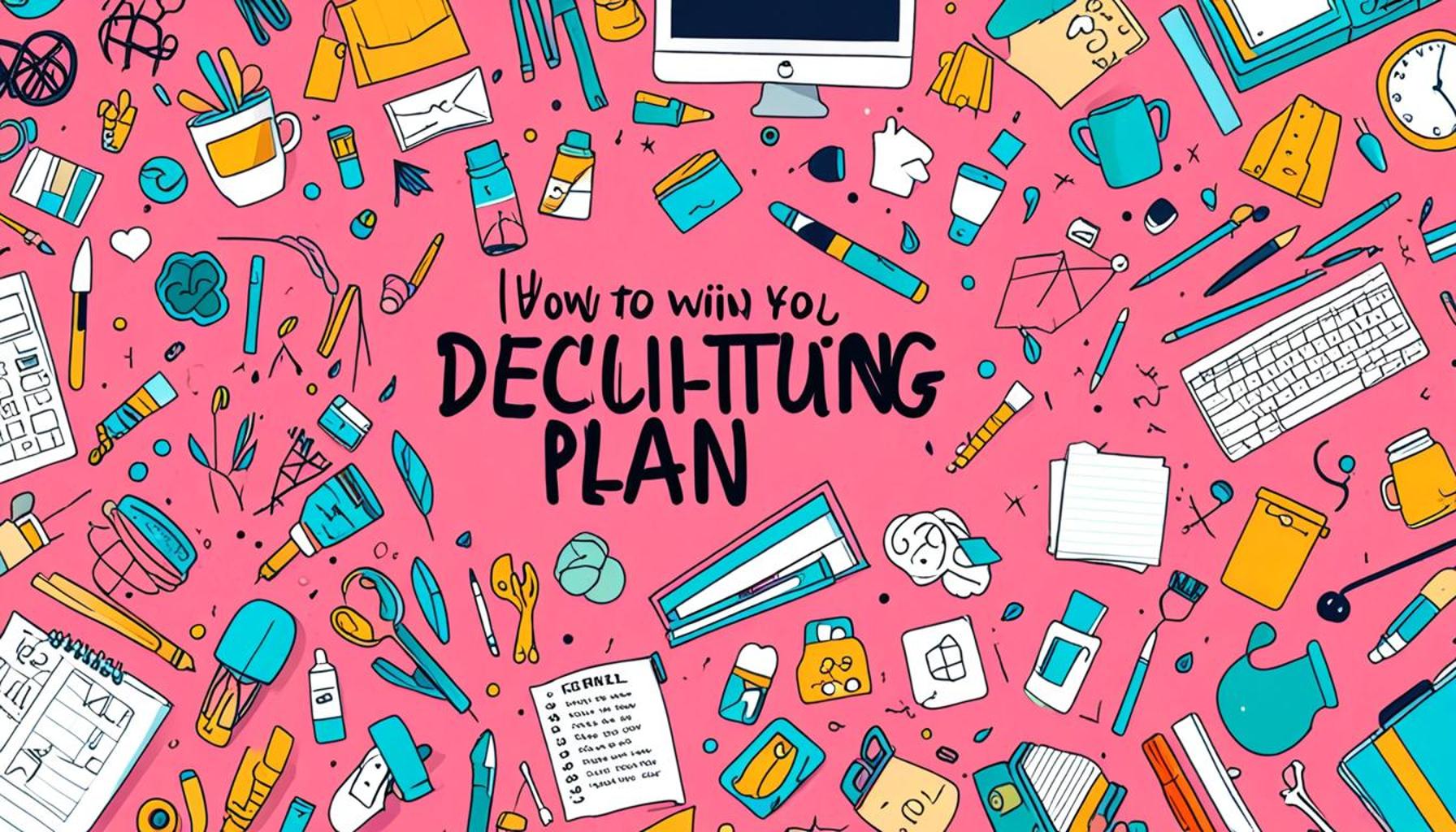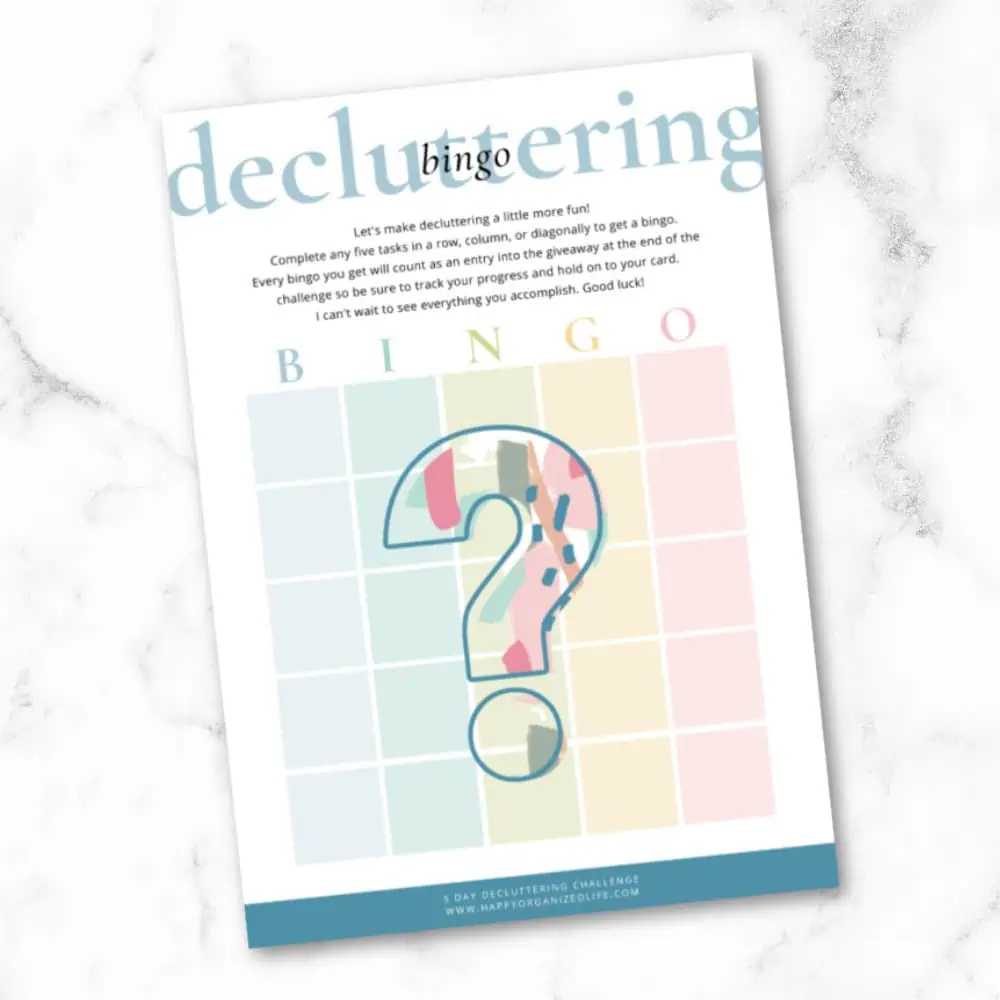How to Create a Customized Decluttering Plan for Your Daily Routine

Understanding the Power of Decluttering
Feeling overwhelmed by clutter is a common experience for many individuals in their daily lives. An organized space can lead to improved focus, reduced stress, and a more productive routine. According to a 2021 survey by the National Association of Professional Organizers, 82% of Americans feel that clutter has a negative impact on their lives. Yet, the process of decluttering often seems daunting and time-consuming, causing people to procrastinate or give up altogether.
Creating a customized decluttering plan helps simplify this task. It allows you to tackle clutter in manageable steps tailored to your lifestyle, ensuring that the process feels achievable rather than overwhelming. Here are some important components to consider:
- Assess Your Space: Begin by identifying areas that need attention—be it your workspace, kitchen, or closet. Walk through each room and take notes on what items make you feel stressed or distracted. This might include everything from overflowing drawers to piles of paperwork on your desk.
- Set Clear Goals: Define what an ideal space looks like for you. Do you envision a minimalist desk free of distraction? Or perhaps a cozy reading nook devoid of unnecessary clutter? Establishing a vision will help guide your decluttering efforts.
- Develop a Schedule: Decide when and how often you’ll dedicate time to decluttering. Whether it’s 10 minutes a day or a scheduled block on the weekend, consistency will help maintain momentum. For instance, you could designate every Sunday afternoon as your decluttering time, turning it into a productive ritual.
- Prioritize Tasks: Focus on one area at a time to avoid feeling overwhelmed. For example, start with a single drawer and gradually work your way up to larger spaces, such as entire rooms. This method ensures that each space receives your full attention and effort.
These elements not only make decluttering more manageable but also ensure that it aligns with your individual needs. A personalized approach fosters a sense of ownership over your space, making it feel less like a chore and more like a rewarding journey. Research shows that a decluttered environment can enhance creativity and concentration, making it a worthwhile undertaking.
By implementing a customized plan, you can reshape your environment to better serve your productivity and well-being. Start by visualizing the change you want to see, then take actionable steps toward your goal. Let’s explore how to craft a plan that resonates with your personal goals and lifestyle, ultimately leading to a more harmonious and fulfilling living space.
DISCOVER MORE: Click here to learn about mindful shopping habits

Crafting Your Personalized Decluttering Strategy
Creating a customized decluttering plan requires self-reflection and a deep understanding of your space, habits, and lifestyle. Start by taking a comprehensive look at your daily routine and how clutter affects it. Often, clutter creeps into our lives gradually, leading to stress and distraction. By making a conscious effort to develop a plan, you can reclaim your space and enhance your productivity.
Here are several essential steps to consider as you tailor your decluttering strategy:
- Identify Triggers: Recognize what causes clutter to accumulate in your space. Is it shopping habits, not having a designated place for items, or simply failing to discard what you no longer use? Documenting these triggers will offer insight into your clutter patterns.
- Choose a Decluttering Method: There are various methods to choose from, each catering to different preferences. The KonMari method emphasizes keeping items that ‘spark joy’, whereas the Four-Box method categorizes items into keep, donate, trash, or relocate. Explore these methods and pick one that resonates with you.
- Set Time Limits: Allocate specific time frames for decluttering sessions. Instead of viewing it as an ongoing task, commit to short bursts. For instance, a thirty-minute session after dinner or a quick ten-minute declutter before bed can yield significant results over time.
- Involve Others: If you share your space with family or roommates, involve them in the decluttering process. This not only creates a sense of communal responsibility but also makes the task more enjoyable. Schedule group decluttering sessions focused on shared spaces, like the living room or kitchen.
Additionally, understanding the emotional aspect of decluttering is crucial. It’s common to find ourselves attached to items due to sentimental value or perceived practicality. Acknowledge these feelings and carefully evaluate each item based on its current value to your life. If an item no longer serves a purpose or brings positive feelings, consider letting it go.
Another aspect to keep in mind is to maintain progress. Establish a routine for reevaluating items in your space. The ‘one in, one out’ rule helps prevent new clutter from accumulating—if you bring a new item into your home, commit to removing one in exchange. This approach simplifies your decision-making process and fosters a sustained decluttered environment.
Creating a customized decluttering plan is an ongoing journey rather than a one-time event. By combining practical strategies with self-awareness and emotional readiness, you will build a manageable path to a more organized and harmonious living space. Embrace this process not merely as a chore but as an opportunity for personal growth and improved mental clarity.
Identify Your Decluttering Goals
Creating a customized decluttering plan begins with identifying your specific goals. Ask yourself what areas of your life you find the most chaotic or overwhelming. Are you struggling with clutter in your home, office, or digital spaces? Understanding where you want to focus your efforts is crucial. For instance, a common goal might be to achieve a more organized home environment, which can significantly enhance your daily functionality and well-being.
Assess and Prioritize Your Space
Once you’ve established your goals, the next step is to assess and prioritize the spaces you wish to declutter. Take a critical look at each area and evaluate how frequently you use items. Create a list of these spaces, ranking them according to priority. For example, your kitchen might be the heart of your home, and a disorganized kitchen can impede your daily tasks. By identifying and prioritizing these spaces, you create a roadmap that guides your decluttering efforts and minimizes overwhelm.
Set a Timeline for Your Plan
Establishing a timeline is essential to staying committed to your decluttering plan. Break down your project into manageable tasks with specific deadlines. For instance, you might allocate a week for decluttering your wardrobe before moving onto the kitchen. Setting realistic deadlines helps maintain momentum and can give you a sense of accomplishment as you check off completed tasks.
Create a System for Decluttering
Developing a structured approach to decluttering can make the process more effective and less daunting. Consider implementing methods like the “Four-Box Method,” where you designate boxes for items to keep, donate, sell, or discard. This visual representation of your choices streamlines decision-making and helps prevent procrastination.
Utilizing digital tools or apps can also simplify this process, reminding you of upcoming tasks and tracking your progress. Remember, your customized decluttering plan should be flexible and tailored to fit your personal lifestyle.
Regularly Review and Adjust
Finally, incorporate a routine for regularly reviewing and adjusting your decluttering plan. Life changes, and so do your needs. Schedule monthly or seasonal reviews to evaluate if your current system is working effectively. This proactive approach ensures that your customized decluttering plan evolves with you, maintaining an organized space that complements your daily life.
| Category | Description |
|---|---|
| Goal Setting | Identifies focus areas to streamline decluttering efforts. |
| Prioritization | Ranks spaces based on urgency for effective action. |
| Timeline | Creates structure to keep the task manageable. |
| Structured Systems | Utilizes efficient methods like the Four-Box Method. |
| Regular Review | Ensures the plan evolves with changing needs. |
DISCOVER MORE: Click here to delve into daily rituals of minimalism
Implementing Your Decluttering Plan
Once you’ve carefully crafted your customized decluttering plan, implementing it effectively can ensure that your efforts yield long-lasting results. This phase involves both practical actions and creating a sustainable routine that continues to address clutter accumulation in your life. Here are some actionable strategies to consider as you put your plan into motion:
- Start Small: Begin your decluttering journey by tackling one small area or category of items—perhaps your desk drawer or a single closet shelf. Focusing on a manageable space will prevent you from feeling overwhelmed and allow you to see positive changes quickly, which can be highly motivating.
- Utilize the Power of Visualization: Before and after photos can serve as powerful motivators. Take pictures of your cluttered spaces and then document the results of your decluttering efforts. This visual representation can inspire you to continue and is a great way to track progress.
- Establish Daily Habits: Integrate simple decluttering habits into your daily routine, such as making your bed every morning or putting things back in their designated spots immediately after use. These small actions can significantly reduce the buildup of clutter over time and cultivate a cleaner environment.
- Schedule Regular Decluttering Sessions: Once a week, dedicate time specifically for decluttering. This could involve going through items in a specific room or reviewing your wardrobe for clothes not worn in the past season. Keeping a consistent schedule will reinforce the practice and help you maintain a clutter-free space.
Moreover, consider the impact of digital clutter on your daily life. Many individuals overlook the importance of maintaining an organized digital space. As part of your decluttering plan, allocate time to clean up your email inbox, delete unused apps, and organize digital files into clearly labeled folders. This practice aligns with your efforts to create a more focused environment, ensuring that both your physical and digital spaces are conducive to productivity.
In addition, make use of technology to your advantage. There are numerous apps available that can guide you through the decluttering process. For example, ‘Clutterfree’ or ‘Decluttr’ can help you manage your belongings, track what you own, and even facilitate donations. Using these tools can streamline your efforts and offer inspiration when you hit a stumbling block.
Another essential component is ensuring that your decluttering plan is adaptable. Life changes frequently, and so should your approach to decluttering. Stay flexible and reassess your strategies on a quarterly basis or whenever you notice your space beginning to fill up again. Adjust your methods, deadlines, or even the categories you focus on as your lifestyle evolves. This adaptability will make it less likely for clutter to reemerge.
Lastly, remember to celebrate milestones along the way. Whether it’s completing your first decluttering session or maintaining a tidy environment for a month, reward yourself for these accomplishments. A small treat or a planned activity can serve as encouragement and motivate you to keep going.
By taking the time to implement these strategies, you can transform decluttering from a daunting task into a routine part of your daily life, ultimately leading to a more organized and fulfilling existence. Remember, consistency is key; creating a customized decluttering plan not only improves your space but can also lead to a clearer mindset, fostering both creativity and productivity.
DISCOVER MORE: Click here to find out how to create calming spaces
Conclusion
In summary, crafting your own customized decluttering plan is a powerful step towards achieving a cleaner, more organized life. By starting small, utilizing visualization techniques, and committing to daily habits, you set the stage for sustainable change. It is essential to schedule regular decluttering sessions and address both physical and digital clutter, as modern living often leaves us overwhelmed in both arenas. Integrating technology through helpful apps can further simplify the decluttering process and keep you motivated.
Moreover, an adaptable approach allows you to switch gears as your life evolves, ensuring that your decluttering strategies remain effective over time. Regular reassessment of your plan will empower you to maintain a clear environment, while celebrating your wins keeps your spirits high and your motivation buoyant.
Ultimately, embracing the art of decluttering does not simply tidy up your space; it paves the way to enhanced productivity and mental clarity. A clear environment is closely linked to a clear mind, allowing you to focus on what truly matters. So, take the first step today—create your personalized decluttering plan and experience the transformative power of a structured and serene living space. Remember, change begins with one small action, and every step counts towards a more organized and fulfilling daily routine.


